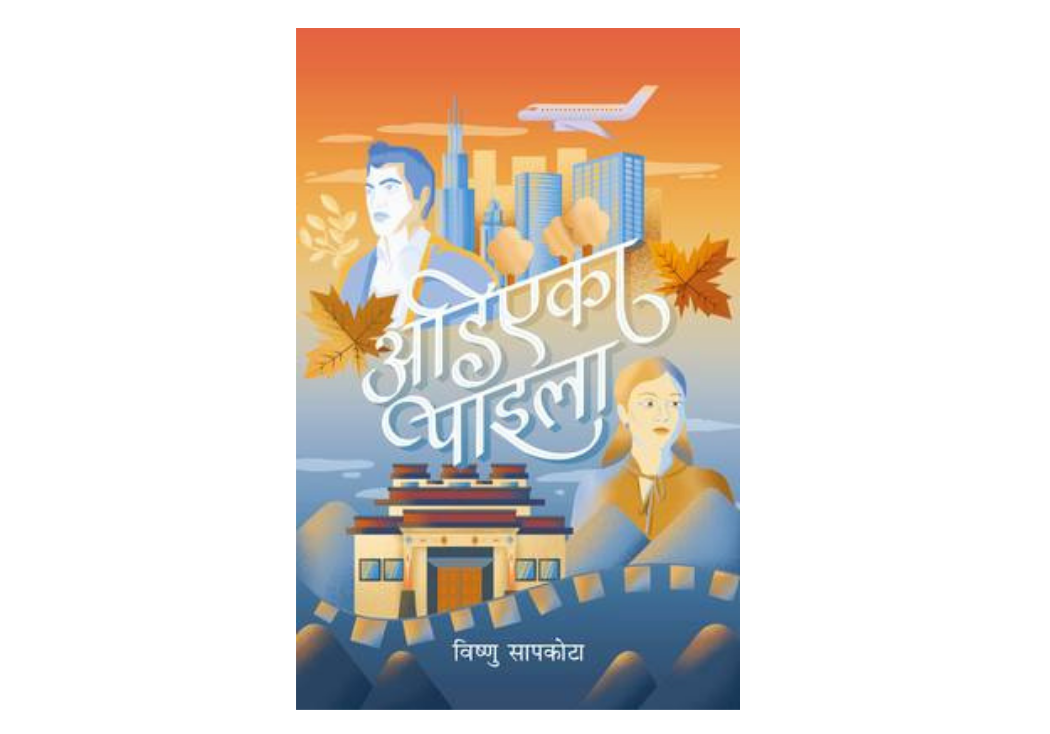A complicated tangle of love and identity

Written by philosophy enthusiast Bishnu Sapkota, Adiyeka Paila is a novel that explains the complicated dynamics of emotions in human relationships.
Astitwa and Anasuya are the protagonists of the novel. Another character in the story, Bandana, is the deuteragonist.
And no, the book is not about a love triangle. Rather, it is about the open portrayal of the feelings of the individual characters, which ultimately shape their lives.
Astitwa is introduced as a university teacher in Kirtipur. He teaches English literature to university students. Anasuya is an MBBS student.
Astitwa and Anasuya meet through Anusaya’s father Mani, a professor at Kirtipur University. To help Astitwa complete his thesis, Astitwa’s friend Pramod advises him to consult with Mani.
Their first interaction resembles the setting of the novel Lolita. Astitwa, in his twenties, is seven years older than Anusuya, who is still a minor.
Anasuya instantly falls in love with Astitwa when she sees him in her house. Moreover, it is easy to understand why Anasuya falls in love with someone like herself, who is educated, single and a literature lover. She is an MBBS student with a passion for literature.
The couple begins dating and their conversations often revolve around the philosophical definition of love.
Astitwa’s attitude towards love combines all the principles he learnt as a student. In contrast, Anasuya expresses himself introvertedly but is braver and wiser when it comes to love.
She postulates that love has little to do with rationality and reason.
However, Astitwa notes, “Love was created to ease the complexity of navigating societal norms and emotional landscapes. Therefore, there is no guarantee that love will not wither tomorrow.”
The author has effectively assessed the maturity level of boys and girls in love. His analysis addresses the much-discussed and often stereotypical notion that girls are generally more mature than boys.
Their journey of attraction turning into love is filled with beautiful butterfly moments that aren’t explored in depth in other books I’ve read.
Discourse on such intricate details assures the reader, as he assured me, that his job is to focus on the qualities of a person he admires. The following dialogue perfectly captures the essence of his own obsession.
“Ultimately, every human being is made up of elements of emotions. No matter how many logical arguments we put forward, our actions are controlled by our emotions.”
The entire plot of the novel is based on a single premise. Much like in cinema, where an actor portrays different characters in different films, the roles in the novel shift and change depending on the circumstances and contexts the characters face.
Likewise, people play different roles in their lives. Our existence is dynamic and multifaceted, allowing us to embody different versions of ourselves as we go through different stages and experiences.
The author’s background as a columnist may have inspired the development of social themes in the novel.
Astitwa’s students Bandana and Mohan are victims of the effects of the Maoist conflict in Nepal.
Mohan, a member of the Madhesi community, moves to Kathmandu to pursue his master’s degree. Once there, he gains a clearer perspective on the silent discrimination his community faces.
An article by JB Pun Magar on “Manu Smriti, Muluki Ain and the Rise of the Bahuns” neatly captures the dilemma Mohan faces in the face of ruling caste accusations that tribal people are inciting division through ethnic-based federalism. At the same time, tribal peoples claim that the ruling class is perpetuating racism through historical privileges and exclusion of ethnic communities.
Bandana, who lost her father during the Maoist insurgency, also confides in Astitwa and tells her about her struggle with the grief of losing a parent.
However, the bond between Anasuya and Astiwa is not love, as the author makes clear through his exaggerated explanation of love, feelings and rationality.
Either you have commitment issues or, to put it more modernly, you are in a “situationship”.
The novel is characterized by a slow pace, but nevertheless constantly develops new plot lines.
Before Bandana, Astitwa and Anasuya had already stopped talking to each other. This incident not only puts a strain on Anusuya’s mental health but also on her relationship with her parents.
The argument arises because Astitwa insists that Anasuya reveal their relationship to her parents. Despite her resistance, Anasuya complies with her boyfriend’s demands.
Her parents are not fundamentally opposed to this new information, but it is still a challenge for them, especially for the father, to accept that his daughter is growing up.
As the story progresses, Astistwa receives a scholarship for his doctoral program at Notre Dame University, one of the most prestigious universities in the United States.
After spending nearly six years in the United States, Astitwa returned to Nepal despite opposition from his expatriate colleagues in Kirtipur.
At this particular point, the author has painted a picture of the harsh reality that many Nepali students face abroad.
The novel does not end with the typical Cinderella ending where estranged lovers reconcile. Instead, it offers a mature and unconventional ending where readers gradually discover the explanation as the story progresses.
However, the characters in the novel are romantic and slightly idealized, making it difficult for the average reader to fully grasp the duality and complexity portrayed by the author.
In retrospect, the novel is an excellent portrayal of a person’s deepest feelings, shaped by the principles and conventions of the society around us.
Through the characters, the author challenges readers to never avoid the inevitable waves of emotions that shape our deepest selves.
Based on his experiences abroad, the author points out the importance of culture and the mother tongue when it comes to expressing one’s feelings authentically.
Adiyeka Paila
Author: Bishnu Sapkota
Publisher: Fine Print
Year:2023



